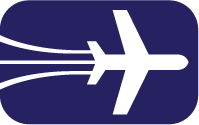Private Pilot Syllabus Section 9
9A - Soft-Field Operations
Learn Special Techniques for Operating at Unpaved Fields
- 1
- 2½
- 1
Assignments
Activities
- Soft-field takeoff
- Soft-field landing
Completion Standards
When complete, the pilot
- establishes the appropriate soft-field takeoff configuration.
- positions the aircraft on the runway with minimum braking, keeping the nose-wheel light.
- lifts the nose wheel off as soon as possible during a roll.
- remains in ground effect until reaching the appropriate climb airspeed, using smooth, continuous pitch control.
- raises flaps when established in the climb.
- can meet the three criteria of all landings - parallel, over the centerline, and nose wheel protected - while demonstrating soft-field landing technique.
- uses power appropriately to soften the touchdown only after the aircraft has been positioned in the appropriate landing attitude.
- keeps the nose wheel off the ground as long as possible on landing roll.
9B - Short-Field Operations
Learn Special Techniques for Operating on Unusually Short Runways, or Runways Constrained by Obstacles
- 1
- 2½
- 1
Assignments
Activities
- Short-field takeoff
- Short-field landing
Completion Standards
When complete, the pilot
- establishes the appropriate short-field takeoff configuration.
- positions the aircraft to utilize the full length of available runway.
- rotates and climbs at speeds specified in the POH.
- retracts flaps once clear of the obstacle and established in a climb.
- establishes a steeper than normal approach angle for short-field landing.
- enters ground effect with minimal excess energy.
- touches down with minimal flare and demonstrates maximum braking technique.
- can meet the three criteria of all landings - parallel, over the centerline, and nose wheel protected - while demonstrating short-field landing technique.
9C - Flying by Instruments
Develop the Ability to Safely Operate the Aircraft Without Outside Visual References
- 1
- 4½
- 2
Assignments
Reference
Activities
- Straight and level using only the attitude indicator
- Instrument climbs and descents
- Standard rate turns
- Flying and navigating without visual reference
- Recovery from unusual attitudes
Completion Standards
When complete, the pilot
- operates the aircraft primarily using the attitude indicator with occasional reference to the other feedback instruments.
- is able to maintain heading, altitude, and coordination in straight and level flight, using only the instruments as reference.
- is able to demonstrate stable climbs, descents, and standard rate turns to Airman Certification Standards.
- is able to navigate while flying without visual reference.
- is able to correctly recognize nose-up and nose-down unusual attitudes.
- promptly corrects power and returns the aircraft to stable, straight and level flight.
9D - Responding to Emergencies
Learn Procedures for Dealing with In-Flight Fires, System Failures, and Other In-Flight Emergencies
- 1½
- 2½
- 1½
Activities
- Emergency descent maneuver
- Fires in flight
- Electrical failure
- Engine failure and forced landing
Completion Standards
When complete, the student
- demonstrates emergency descent to Airman Certification Standards.
- demonstrates appropriate response to all types of in-flight fires.
- demonstrates appropriate response to system malfunctions and emergencies.
9E - Associated Ground Topics
Acquire the Knowledge Needed to Support the Flight Skills of This Section
- 2
- 2
- 0
Assignments
Completion Standards
When complete, the student
- demonstrates knowledge of key topics in aeronautical decision making.
- understands the value and danger associated with operating under special VFR, especially for takeoff.


